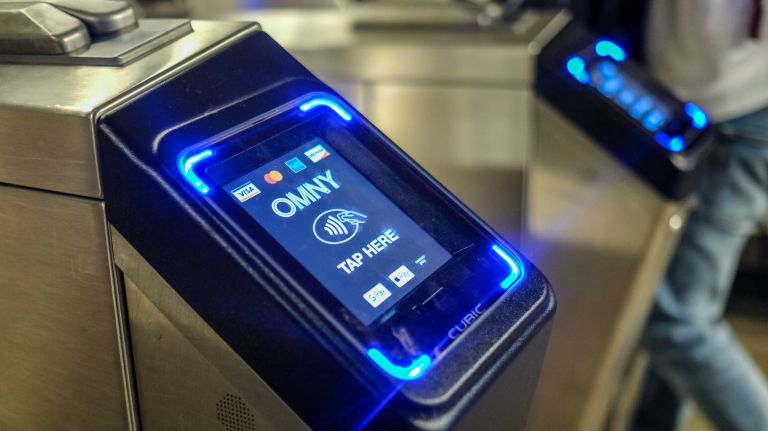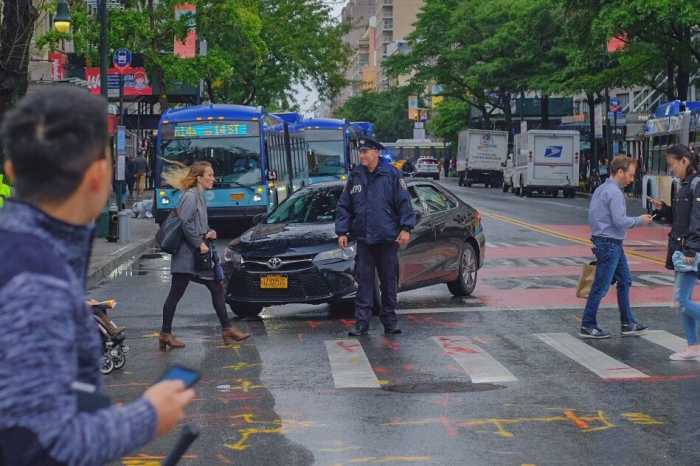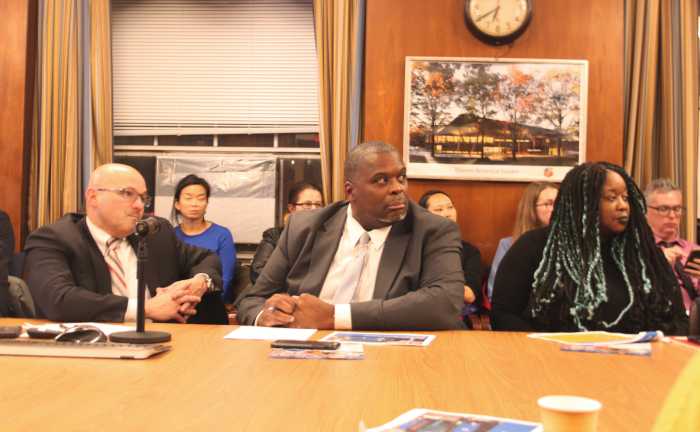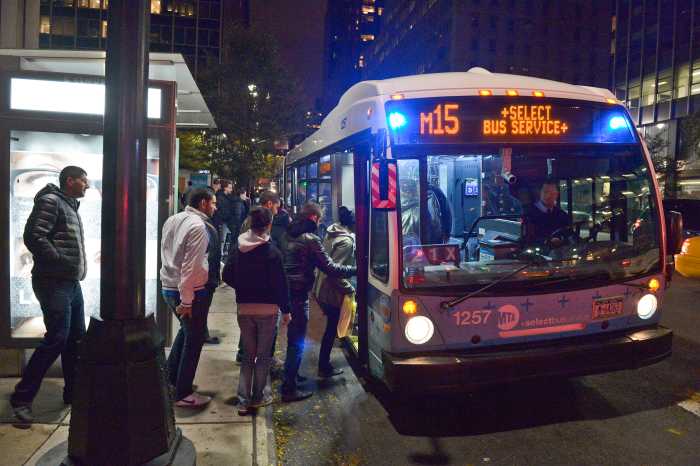As New York recovers, Governor Cuomo and MTA leaders must do more to restore transit ridership lost to quarantine. OMNY readers are now in place across New York’s bus system. The MTA should start up all-door boarding on every bus to immediately speed up service throughout the city.
After committing to turning on systemwide all-door boarding this year, the MTA says it may wait until MetroCards are retired in 2023. Waiting will not help riders nor the MTA at all. There’s no reason to delay.
OMNY is MTA’s new fare payment system intended to replace MetroCard, increasing efficiency and ease for riders. Implementation is planned in several phases. In the end, riders will tap-and-go with a bank card, smartphone, or dedicated OMNY card coming soon.
When they’re turned on, OMNY readers will let riders pay at both the front and back bus doors. It’s Select Bus Service, except it works on all buses citywide, and getting a ticket before boarding isn’t required. Fares would be enforced similarly, by having inspectors check whatever media riders pay with. Tap-and-go is much faster than dipping a MetroCard and waiting two seconds — one-by-one-by-one…
The current boarding method slows buses down. On busy routes, buses spend 20 percent of the time at stops without moving! All-door boarding can cut this time nearly in half, make service more reliable, and prevent large gaps between buses, which helps fulfill another of MTA’s goals to improve bus service.
As a long-time bus rider, all-door boarding would help me out a lot. I live in southeast Queens, which means I get on the bus at the first stop in Jamaica along with hundreds of others. Every bus line is the same; precious minutes stuck in line (or sitting in the bus not moving if you’re first) until everyone gets on.
Occasionally I’ll ride one of the long, bendy buses common in the Bronx. These buses hold more than 100 people, so major stops are even more time-consuming than with regular city buses. I remember one ride on the Bx9 where tons of people got on and off at every stop. Every two or three blocks was another lengthy delay (in addition to the red lights).
Another problem that comes with one-door boarding is that by getting on all the way at one end of the bus, riders don’t disperse. The front of the bus is more densely packed (and harder to sift through) than the back. Frustrated drivers sometimes nag their passengers to move to the back, threaten to not move the bus at all until they do, or simply leave riders behind even if there’s room in the back.
Select Bus Service shows how much better all-door boarding works. I ride the Q53 and Q44. In both cases, the bus spends almost no time at the station at all. Riders get on and disperse throughout the bus. It’s so much easier, faster, and less stressful.
For those worried that all-door boarding might cause fare evasion, look at the current state of things. Riders already skip the line to get in the back door without paying and get space in the back of the bus before others do. Sometimes drivers simply don’t let people pay. To get everyone on the bus faster, they cover the farebox with their hand and wave people in. The MTA loses revenue every day this way.
One reason the MTA is holding back is that inspectors will be unable to check fares of riders who use MetroCard or pay with coins. But the MTA currently doesn’t inspect fares on buses at all, except on Select Bus Service. Fare compliance will actually be higher with OMNY, by having more readers throughout the bus and removing the cumbersome process of dipping MetroCards.
Hundreds of thousands of essential workers relied on buses throughout quarantine. Over a million people take the bus every day now. OMNY readers are already installed on every door of every single bus, even the oldest ones. So why should the MTA wait two more years to better serve riders?
If the governor wants to fully recover ridership and regain public trust, the MTA should flick the switch to let us board and travel faster.
Santaella is a member of the Riders Alliance, New York’s grassroots movement of public transit riders.






































